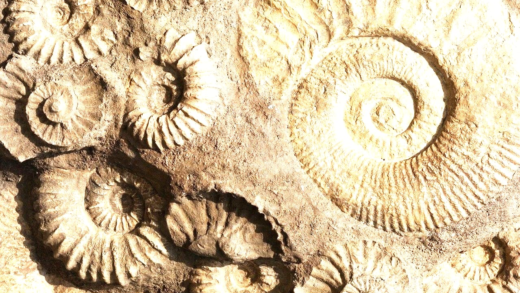Anubis played a crucial role in ancient Egyptian mythology as the guardian of the underworld and protector of the dead. His influence extended to mummification rituals, where he ensured the safe passage of souls to the afterlife. Archaeological evidence supports Anubis’s worship through artifacts and inscriptions, highlighting his significance in Egyptian culture. Over time, Anubis’s role evolved, integrating with other deities and adapting to changing funerary practices, reflecting the dynamic nature of ancient Egyptian beliefs about death and the afterlife.
Role of Anubis in Death
Anubis in ancient Egyptian mythology is a vital figure during the dying process. He represents the transition from life to death, serving as the divine guide for souls. Anubis’s significance lies in his role as a protector and an overseer, ensuring that the deceased safely navigate the afterlife. Ancient Egyptians believed that Anubis would weigh the heart of the deceased against the feather of Ma’at, the goddess of truth and justice. This judgment determined whether the soul would enter the afterlife or face annihilation.
Understanding Anubis’s role in guiding souls is crucial. He not only assists in the journey to the afterlife but also embodies the ancient Egyptians’ beliefs about death. His presence provides comfort, symbolizing hope and protection for the departed. Anubis’s significance in the dying process reflects broader themes in ancient Egyptian culture, emphasizing the importance of the afterlife and the rituals surrounding it.
Mummification Rituals
Anubis played a central role in mummification, the ancient Egyptian practice crucial for preserving the body for the afterlife. He was believed to oversee the entire mummification process, ensuring that the deceased received the proper rites. Specific rituals performed by Anubis included the embalming of the body, the wrapping of the corpse, and the placement of amulets to protect the soul.
Learning about these rituals reveals the meticulous care ancient Egyptians took in preparing for death. Anubis was often depicted as a jackal or a man with a jackal’s head, symbolizing his connection to the dead. His involvement in mummification signifies the belief that the body and soul are interconnected, emphasizing the importance of preserving the body to ensure a successful journey in the afterlife.
Symbols of Anubis
What symbols are associated with Anubis? Ancient Egyptians used various symbols to represent Anubis, each carrying significant meaning. Common symbols include the ankh, representing life; the sistrum, linked to music and joy; and the jackal, which signifies his role as a protector of the dead. These symbols were often incorporated into tombs and artifacts, reinforcing Anubis’s importance in the afterlife journey.
Identifying the visual representations linked to him helps to understand how Anubis was perceived in ancient Egyptian culture. Statues, paintings, and inscriptions often depicted Anubis in a protective stance, reinforcing his role as a guardian. His symbols served not only as reminders of his protective nature but also as affirmations of the beliefs surrounding death and the afterlife.
Protection of the Underworld
Anubis, the guardian of the underworld, played a crucial role in protecting the gates to the afterlife. His primary responsibility was to ensure that only the worthy could enter the realm of the dead. This protective role involved not only guarding the gates but also judging the souls of the deceased. Anubis was depicted as a jackal or a man with a jackal’s head, symbolizing his connection to the dead and the protection he provided.
Understanding Anubis’s protective role helps illuminate the ancient Egyptians’ beliefs about the afterlife. He safeguarded the gates in several ways:
- Conducting the weighing of the heart ceremony, where the heart of the deceased was measured against the feather of Ma’at.
- Preventing malevolent spirits from entering the afterlife.
- Guiding souls through the Duat, the Egyptian underworld, ensuring they reached their final destination safely.
His presence at the gates of the underworld offered comfort and reassurance to the living and the dead alike. Anubis’s vigilance and strength made him a vital figure in the journey of the soul, embodying the ancient Egyptians’ deep reverence for the afterlife.
Egyptian Views on Death
The ancient Egyptians had a complex view of death and the afterlife, heavily influenced by their beliefs in Anubis. They perceived death not as an end, but as a transition to another existence. This belief was deeply rooted in their culture, leading to elaborate burial practices and rituals designed to honor the dead.
Key aspects of their views included:
- A strong belief in immortality, where the soul would continue to exist after death.
- The importance of mummification to preserve the body for the afterlife.
- The concept of judgment after death, with Anubis playing a key role in the weighing of the heart.
These beliefs shaped their rituals and the way they treated the deceased. Tombs were filled with goods for the afterlife, and elaborate ceremonies were performed to ensure the safe passage of the soul. Anubis, as the guide and protector, was integral to these practices, emphasizing the Egyptians’ deep-seated convictions about life after death.
Cultural Influence of Anubis
Anubis’s influence on Egyptian culture and beliefs was profound and far-reaching. He was not just a deity associated with death; he represented the entire spectrum of beliefs surrounding the afterlife. His role in mummification and protection of the dead shaped various cultural practices and traditions.
Some cultural impacts included:
- Incorporation of Anubis’s imagery in art, including tomb paintings and sculptures, which depicted him overseeing funerary rites.
- Celebration of festivals in his honor, emphasizing the connection between life and death.
- Influence on literature and mythology, where Anubis was frequently referenced in texts discussing the afterlife.
Anubis’s presence in daily life and religious practices underscored the ancient Egyptians’ respect for the dead. His legacy persists in modern interpretations of ancient Egyptian culture, highlighting the lasting impact of this enigmatic figure on history and belief systems.
Historical Evidence of Anubis Worship
Anubis’s worship in ancient Egyptian society is supported by various archaeological findings. These artifacts provide insight into how this deity was revered and the significance attributed to him. Key discoveries include:
- Tombs and Funerary Artifacts: Numerous tombs from the Old Kingdom onward contain depictions of Anubis. Statues and paintings often show him overseeing the mummification process, emphasizing his critical role in guiding the deceased to the afterlife.
- Inscribed Texts: Hieroglyphs found in burial sites frequently mention Anubis. Texts detail rituals involving him, illustrating the importance of his protective presence during the transition to the afterlife.
- Amulets and Jewelry: Archaeologists have discovered amulets shaped like Anubis, indicating that worshippers sought his protection in life and death. These artifacts were often buried with the deceased to ensure a safe passage to the afterlife.
Exploring this historical evidence reveals Anubis’s enduring influence in ancient Egyptian culture. His worship was not limited to funerary practices; it permeated daily life, showcasing the deep-seated beliefs surrounding death and the afterlife.
Shifts in Anubis’s Role Over Time
The role of Anubis evolved significantly during the Old Kingdom and beyond. Initially, he was primarily viewed as a god of mummification and the afterlife. However, over time, several factors contributed to a shift in how he was perceived:
- Integration with Other Deities: As Egyptian mythology developed, Anubis began to merge roles with other gods, such as Osiris. This integration reflected the changing dynamics of worship and the need for a more comprehensive understanding of the afterlife.
- Changes in Funerary Practices: The shift from simple burial practices to elaborate mummification rituals led to an increased emphasis on Anubis’s role. His association with preserving the body became more pronounced as the importance of the afterlife grew.
- Regional Variations: Different regions in Egypt had varying interpretations of Anubis. In some areas, he was the primary deity of the dead, while in others, he was considered a subordinate figure to Osiris.
Understanding these shifts in worship and perception over time illustrates how Anubis adapted to the changing beliefs of ancient Egyptians. His evolution from a mummification deity to a more complex figure in the pantheon highlights the dynamic nature of their religious practices.





Comments are closed.